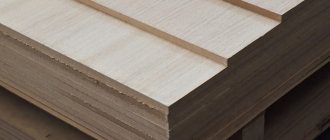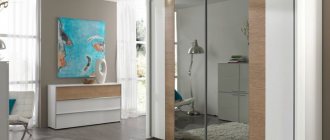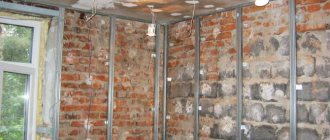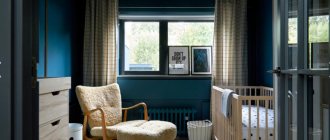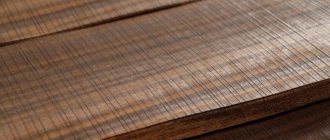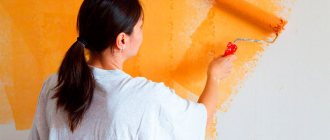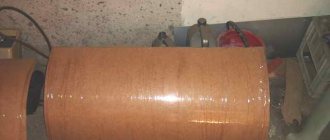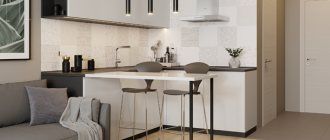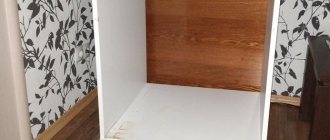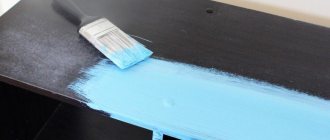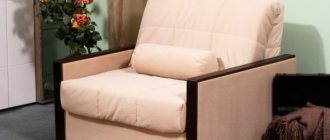- March 29, 2020
- Walls
- Daisy Angel
Recently, wall decoration with MDF panels has become increasingly popular. This trend is explained by the fact that with the help of this material you can quickly level and put in order surfaces of an impressive area. Installation of the panels does not take much time, because there is no need to wait for numerous layers to dry, as is the case with plastering work. The leveled surface does not require additional finishing, as when using drywall. MDF panels have another important advantage, expressed in affordability.
Before gluing MDF panels to the wall, you should inquire about the technology of the work. Installation can be carried out in one of two ways. The first is fastening to the frame sheathing, the second is fixing with an adhesive composition. You can use, for example, liquid nails. This adhesive is suitable exclusively for wood products and wood products, as well as sealing cracks, as it contains sawdust filler.
If it is necessary to fill up defects in existing sections of the wall, you should select a mixture based on the shade so that after repair, individual sections of the wall do not differ in color.
If you are thinking about the question of how to glue MDF panels to a wall, you must first select the material. It is made in a variety of shades and can have a textured relief that imitates wood species. You can choose panels in stone imitation, matching them to your interior design.
The panels can be combined with each other, installing them horizontally or vertically - everything will depend on the desired end result. So, if the ceiling is too high and makes the room uncomfortable, it is best to install the panels horizontally, combining different shades. If it is necessary to visually raise the wall, the panels are installed vertically. Products can have different widths and lengths, so before choosing a shape and color, you should think about what effect you want to achieve.
Which glue to choose
One way to install MDF panels on walls is to use glue. It can be presented in the form of a universal compound or a special mounting adhesive. The last option is liquid nails. If we are talking about frameless installation, then liquid nails will be the most suitable option. One of the leaders on the market is Moment liquid nails. In addition to the tube, you will have to purchase a gun, which will make it easier to apply the composition.
You can also use polyurethane foam. The main purpose of this mixture is sealing, but professionals today quite often use the compound to install panels on walls and ceilings. Each manufacturer has two types of similar composition in its assortment. One of them is intended for interior work, the other is universal. You can use any panel to install panels on the wall.
If you are going to install MDF panels on walls for the first time, then it is best to purchase liquid nails. They are easy to apply and the attachment is quite strong. Application should be carried out in a thick or thin layer; thanks to the thickness, minor defects in the wall can be smoothed out.
After the mounting compound has dried, it will still remain elastic and flexible, thereby ensuring resistance to vibration and deformation. This is important for boards made of particle board materials, since they change linear dimensions when exposed to humidity and temperature changes.
How to glue MDF to MDF. How to glue MDF together?
Today's:
- How to install a plastic window in a wooden house. How to install PVC double-glazed windows
- How to glue MDF to MDF. How to glue MDF together?
- How to glue MDF - features of installation work
- Glue for MDF - review of the best options
- How to glue MDF end to end.
- Installation of MDF panels: frame installation method
- Video adhesive for MDF Interbond
Glue is usually called a composition that, under certain conditions (chemical reactions, heating, pressure) hardens and connects different components of the same or different products.
In this case, the materials of the parts being glued together may be the same or different. Gluing is one of the most common jobs in furniture production. Over time, it turned out that the main technologies and their development in this process belong to workers in the furniture industry, who perform veneering, gluing flat and curved parts, and lining various surfaces.
When choosing adhesive for MDF, you need to take into account the following aspects:
- materials used;
- equipment used;
- requirements for the final item.
All these conditions are difficult to combine within one type of glue. Therefore, in order to obtain a high-quality gluing result, it is necessary to correctly select the adhesive for MDF.
In the production process of various pieces of furniture, a large number of different fasteners are used, such as staples, dowels, ties, corners, etc. At the same time, glue for MDF has been used for a long time, and to this day it has not lost its relevance. Thanks to the use of such a composition, it is possible to connect any materials and parts.
Application
When working with MDF, a number of rules must be observed. First of all, the surfaces to be joined must be completely dry. Then the adhesive composition is uniformly applied, for which you can use a special sprayer. Particular attention must be paid to the edges of the elements. Excessive application of the composition and comparison of elements before the allotted time can lead to the absence of a positive result.
Another important aspect: with one-sided coating with an adhesive composition, it is sprayed on a hard surface. There are two different methods - cold and hot. The first case requires waiting about a day before using the product, the second method - after 6 hours. The main requirement for MDF glue, which is used in furniture production, is a minimum setting time and a high level of seam strength.
Help on MDF
The MDF material gained recognition among many many years ago due to its low cost and long service life. In professional furniture production, specialized compounds called hot-melt adhesives are used for gluing. Companies using this type have long appreciated its advantages, some of which include high speed of work completion and a stable level of professionalism. According to their physical and chemical properties, melts are classified as thermoplastic materials. This means that when heated they acquire a highly elastic consistency. And after cooling they become hard in a short time. A high level of fluidity and ductility in a warm state and strength after cooling is ensured by the ethylene in combination with vinyl acetate that is incorporated into the polymer. In addition, they have good compatibility with various types of materials. Knowledge of the properties and technological features of using these compounds is needed by specialists who participate in the manufacture of furniture in professional production. The main disadvantage of using such glue for MDF is the need to have the appropriate equipment to complete the work. The composition is applied using a hand gun or a special machine.
For all technical issues, you can contact our specialists, who will try to advise you as fully as possible. Our phone number is in Moscow. By sending a message to our email address
We ask you to leave a note in the subject of the letter indicating that you have received technical advice, indicating your telephone number and contact information. After processing the question, a technologist will contact you.
Selection of glue by composition
On sale you can find two-component cyanoacrylate adhesive for MDF, which is based on a viscous gel and an aerosol activator. Among the main advantages of this mixture are:
- high strength;
- Possibility of use for gluing complex surfaces;
- Ideal for application to vertical surfaces.
The substrates to be glued may have an uneven or porous structure, but the glue increases the strength of the connection and prevents the mixture from being absorbed by the porous surface.
When thinking about the question of what is the best adhesive for MDF panels to buy, you should pay attention to the described composition, which does not splash or flow from the walls. It can be used for any wood materials. If the glue remains after work, you can use it to glue:
- rubber;
- plywood;
- skin;
- most plastics.
It is even used in repairing and making furniture. It is especially suitable for quick gluing.
General information
Main requirements for glue
Nowadays, glue for MDF is presented in a wide variety, but, despite this, all adhesive compositions must meet certain requirements:
- the glue must have a specific purpose, for chipboards or for general use;
- reliable adhesion to any substrate;
— highly resistant to humidity;
Typically, adhesive compositions for MDF do not require frost resistance, because such panels are mainly installed indoors.
Types of glue
Despite the large selection of adhesives for MDF, their main purpose is to adhere to the walls and securely adhere to them. All types of glue for MDF are divided into the following groups:
Preparing tools
In order to work comfortably, it is necessary to prepare tools that will speed up the installation of the material and make the work as simple as possible. Tools you should prepare:
- electric jigsaw;
- roulette;
- construction stapler;
- pliers;
- plumb line;
- metal screwdriver;
- simple pencil.
The pencil can be replaced with a marker. Don't forget to have a construction corner on hand.
Stages of work. Basic installation methods
Wall covering with MDF panels is carried out using glue or on a frame. Both techniques can be used for installation in an apartment or in a house, but for adhesive installation the basic condition must be met - the wall must be flat. If the panels are glued to the surface, it is first leveled with plaster or drywall. If you decide to use glue, then there will be few auxiliary materials - these are liquid nails and fittings.
If you need to level a wall using MDF panels, hide communications behind them, or implement sound or heat insulation, you will first have to install a frame that will bring the surface into one plane. The frame can be made of metal or wooden beams.
Production Features
From cleaned and sorted wood chips of any type of wood, using a special device - a defibrator, the process of separating wood into fibers is carried out. This requires high temperature (100°C) and humidity (>80%).
several repeated cycles in the defibrator , during which hardeners, binders, paraffin and resins are introduced into the resulting mass.
5 seconds of drying in a stream of hot air (up to 240°C) - and the dry mass goes to molding . The molded layer of fibers is called "carpet". The board production process is completed under a press.
The resulting canvas is cut, cooled for 20 minutes and sanded depending on the grade.
Which lathing to choose. Inspection of walls
The easiest way to cover walls with MDF panels is to use wood, since you can use staples or nails for this. When installing on a metal profile, you will need metal screws, and in this case you cannot do without a screwdriver. When using a frame, a gap is formed between the cladding and the wall, in which there will be no air circulation. Such conditions are attractive to fungus and mold.
Before installing the sheathing, you should inspect the wall. If it is wet, it is first dried and then treated with an antiseptic composition. It is better not to install such cladding on external thin walls, as it will quickly become unusable and an unfavorable microclimate will be created in the room over time, which can contribute to the formation of allergic reactions.
Preparation of materials for installation on the frame
If you plan to install panels on a frame, you should prepare:
- wooden beam;
- insulation material;
- metal hangers;
- clamps;
- wood screws;
- small nails;
- dowels;
- fittings profiles.
The timber is treated with an antiseptic. Foamed polyethylene can act as insulation. Clippers will be needed to fix the panels to the frame.
Installing panels with glue
If you are faced with the question of how to glue MDF panels to the wall, then you must mark a horizontal or vertical line before installing the first product. You will need to control the position of the panels using a level. When choosing an adhesive, it is important to consider its plasticity after drying, otherwise there is a risk of deformation of the panels. It is important to purchase a mixture that is not affected by temperature changes and humidity.
Before gluing the MDF panel to the wall, you must apply glue to its back side - these can be wavy lines or individual dots. The product is pressed well to the surface and then comes off for a few minutes. After this, the final fixation is carried out: the panel is installed and pressed again. In this case, it must be maintained for several seconds until the glue sets securely.
Folding corner MDF Kronospan
Cut the corner to the required size.
We insert the tube with “liquid nails” into the “gun” (if there is no “gun”, press with whatever is convenient, a block, a hammer handle, and so on).
Apply glue only to the corner and only in a thin layer.
Then we press the corner tightly against the MDF panel, tightly, but not tightly.
Now we tear off the corner and wait about five minutes, the glue will dry out a little during this time.
Next, the corner is returned to the panels, now you can press it more firmly and check for complete fit along the entire length.
Well, in the end, not a big piece of advice: Don’t rush to wipe off the excess “liquid nails”, wait until the glue dries, then just cut it, either with a knife or with a blade.
You won’t be able to remove the glue right away, you can’t rub MDF, it will ruin the texture.
The corner is decorative in nature and is attached accordingly in two ways:
- For “liquid nails” type glue. Apply to the entire corner and press into the corner.
- For small finishing (without heads) carnations. The nails are driven through the corner into the MDF panel itself. You can make these nails yourself by biting off the head. If you need to fasten the panel itself along with the corner, then the nail must go through the panel into the sheathing.
How to speed up the repair process
To speed up the process, the composition can be applied to several canvases at once, which are pressed against the wall and then opened. They need to be left for a while so that the glue begins to polymerize a little. Having torn off the last of the panels, you need to glue the first one, after which you can proceed to the second.
When installing the canvases, you should press them well against the surface, and for better fixation, each of them can be secured with self-tapping screws in two places. Screwing is carried out into the groove of the panel, then the screw is closed with the tenon of the next one. But usually glue is enough. In addition, additional mechanical fixation prolongs the work and makes it more labor-intensive. Yes, and you will have to spend extra money on metal fasteners.
What to consider during installation
If you are interested in the question of how to glue MDF panels to a concrete wall, then you should know that liquid nails are best suited for this. But for a good result, it is important to inquire about additional nuances of installation work. For example, the panels cannot be bent, so the material is cut in the corners to install them. Then the edges of the products can be covered with a corner, which is used for external and internal corners.
MDF panels are also installed quite often on mounting foam. It is important to avoid distortion when installing all the following lamellas. The first panel is installed in accordance with the vertical level and fixed with self-tapping screws in those places where they will be covered. If this is a corner, then you can decorate the screw with a decorative overlay; the screws are covered on top by the ceiling, and on the bottom by a plinth. The position of the panels will need to be monitored throughout the work. Experts recommend placing a level on every fifth panel.
Why choose the adhesive method?
Now you know how to glue MDF panels to a wall with liquid nails. But if you are still in doubt about which installation method to use - frame or adhesive - you should consider the advantages of the latter. Frame installation is more expensive and takes more time, because you will have to install a wooden or metal frame, spending additional money on materials.
The adhesive method does not take away free space from the room. If you use mechanical fasteners, then even the smallest finishing nails will be noticeable, and the adhesive method allows you to get a good result and an attractive appearance of the walls. To extend the life of the panels, MDF can be coated with an insulating primer and a layer of putty. This will prevent swelling of the material and the appearance of mold. When products have unpainted surfaces, the joints are caulked to prevent moisture from entering.
Methods for insulating walls to preserve the appearance of MDF panels
If the master decides to insulate the walls in order to preserve the appearance of the wooden slabs, he can use the following methods:
- After installing the frame, fill the empty space with foam boards or other selected insulation;
- Glue penofol with a top layer of foil up to 3 millimeters thick before attaching the sheathing.
The insulation can also be mineral wool, penoizol, penoplex, foamed or extruded polystyrene foam, polyurethane foam.
After installing the frame, fill the empty space with foam boards or other selected insulation.
